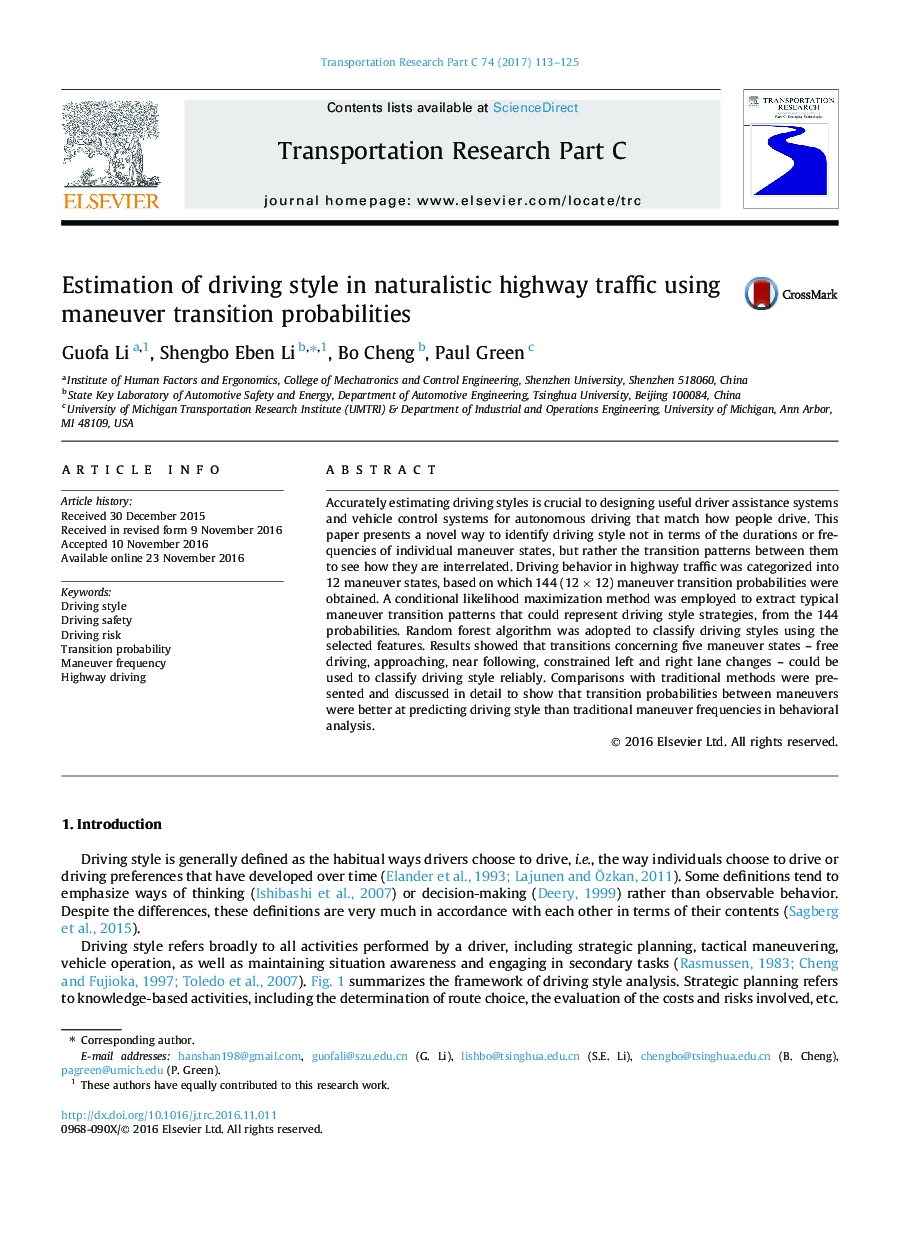| Article ID | Journal | Published Year | Pages | File Type |
|---|---|---|---|---|
| 4968582 | Transportation Research Part C: Emerging Technologies | 2017 | 13 Pages |
â¢Driving behavior can be categorized into multi-maneuvers in different situations.â¢A framework of driving style analysis is proposed.â¢Maneuver transition probabilities better identify driving style.â¢High-risk drivers involve more in closing, tailgating, and constrained lane changes.â¢Transitions of high-risk drivers are more complicated than that of low-risk drivers.
Accurately estimating driving styles is crucial to designing useful driver assistance systems and vehicle control systems for autonomous driving that match how people drive. This paper presents a novel way to identify driving style not in terms of the durations or frequencies of individual maneuver states, but rather the transition patterns between them to see how they are interrelated. Driving behavior in highway traffic was categorized into 12 maneuver states, based on which 144 (12Â ÃÂ 12) maneuver transition probabilities were obtained. A conditional likelihood maximization method was employed to extract typical maneuver transition patterns that could represent driving style strategies, from the 144 probabilities. Random forest algorithm was adopted to classify driving styles using the selected features. Results showed that transitions concerning five maneuver states - free driving, approaching, near following, constrained left and right lane changes - could be used to classify driving style reliably. Comparisons with traditional methods were presented and discussed in detail to show that transition probabilities between maneuvers were better at predicting driving style than traditional maneuver frequencies in behavioral analysis.
Graphical abstractDownload high-res image (180KB)Download full-size image
